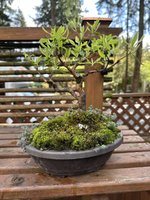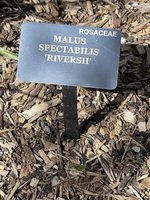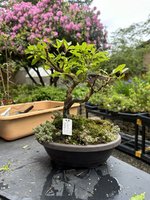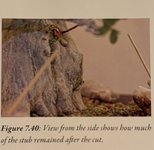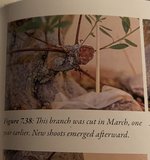What do you predict will happen to this azalea?
Here’s its story:
Years ago my Father in law accidentally sat on this azalea bonsai, breaking off a branch. The result was a hollow area left on the trunk (see bad photo of hollow) which he painted with wound sealant. Years later (two and a half years ago) it was bequeathed to me with a number of other bonsai.
I was down with a severe injury until this spring, so about all I could do was water, fertilize, lightly trim and turn. This year, all healed up, I’ve been going through each tree one by one.
The first job was to get this particular tree healthy as the Feb repot showed little roots and possible root rot to boot. Now, I think this is well under control and I took a look at the hollow area. Lots of rot in the trunk.
Out came the fine chisels and I gouged and scraped until I got as much rot out as possible.
Next next step, I’m sure is a bit controversial, was to assure that the rot was totally gone.
Having asthma issues I left the lime sulfur on the shelf and instead used a micro torch to burn off the affected area.... sadly zinging a few leaves in the process. My bad!
Afterwards I scraped off the entire wound to good wood.
Finally I applied cut paste inside the wound.
So, besides being turned in to the American Association of Bonsai Enthusiasts against Azalea Torture, what would you all predict will happen to the tree overall and the wound specifically?
Cheers!
DSD sends
View attachment 305666View attachment 305670View attachment 305672













